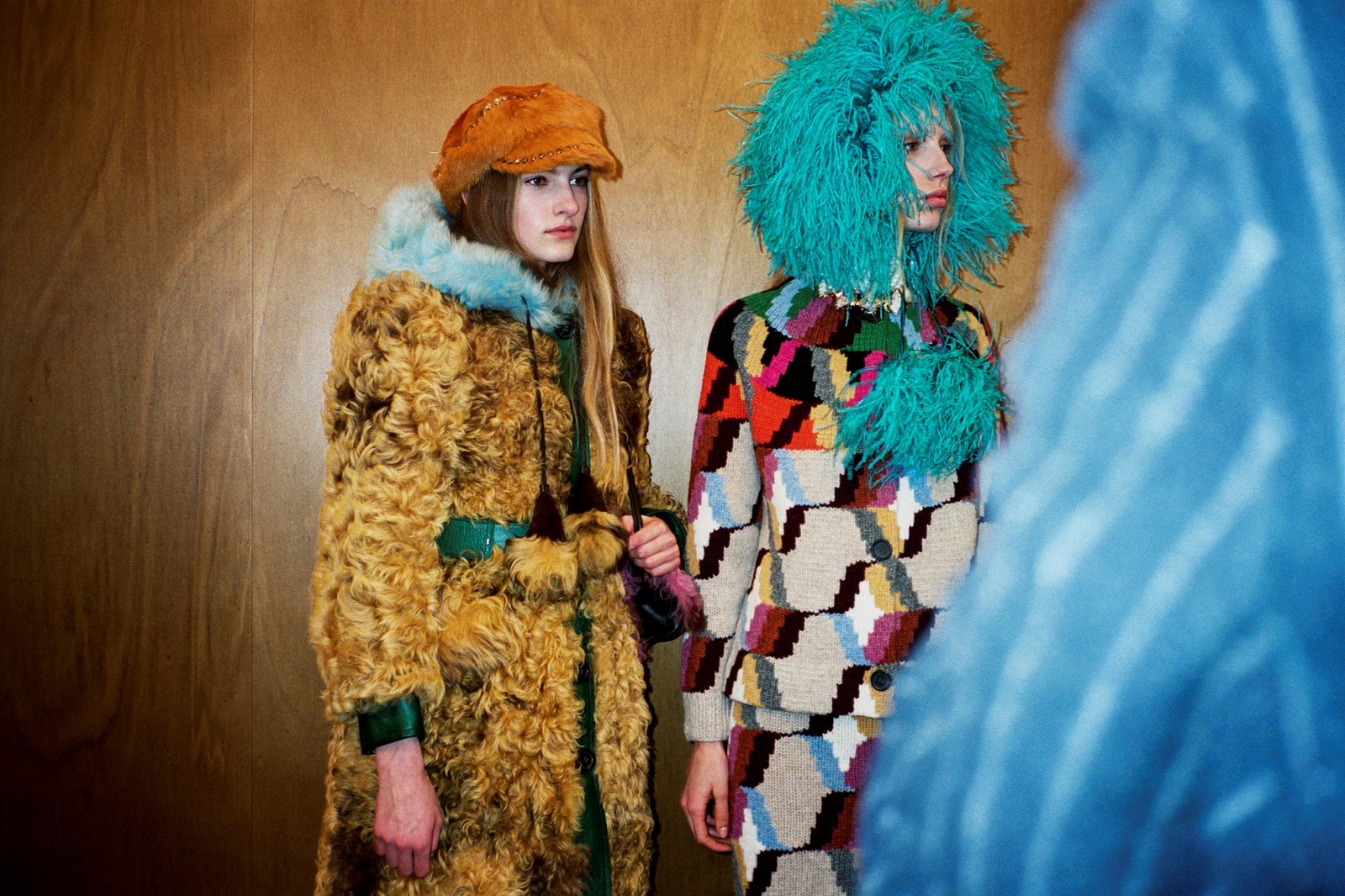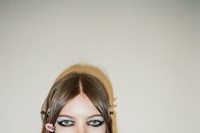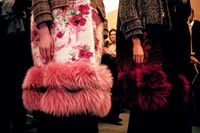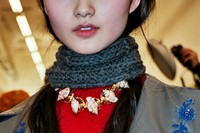“Fashion is about the everyday and the everyday is the political stage of our freedoms,” read one of many posters (Miuccia Prada called them “manifestos”) covering the walls of the set at Prada in Milan for the Autumn/Winter 2017 womenswear show. “We have decided to look at the role women have had in the shaping of modern society.” It’s an ambitious viewpoint, particularly given today’s cultural and political climate. Leave it to this designer to raise the questions and face issues that are all too often miscommunicated with a subtlety and intelligence that only very few (if any) working in fashion have ever rivalled.
The Set
Following on from the men’s collection shown in January, this was, by contrast and as might only be expected, a woman’s world, conceived once again by Rem Koolhaas and OMA. Prada said she was thinking of the 1980 Fellini film, City Of Women, although that reference did not extend to the clothes. The same ceramic tiles came in pale (Prada) green, brown, pink… This time, though, guests took their seats on beds made up with vinyl sheets printed with powder blue blooms or covered in fluffy faux fur in bubblegum pink, crimson and black. Artworks were cut out and placed in a manner that seemed reminiscent of a rebellious teenage girl’s bedroom walls; the pin-ups in particular drew on the art of Robert E McGinnis who, the powers that be at Prada correctly stated, might not be a household name but whose work is instantly recognisable nonetheless. He is responsible for posters for films including Breakfast at Tiffany’s, Barbarella, Diamonds Are Forever and any other great Bond classic one might care to mention and, more recently, The Incredibles. His femmes fatales later appeared on the clothes. “We were doing this set with manifestos that we carefully studied with OMA and Rem Koolhaas because they had to embrace what’s happening in the world and to go back to a more sensitive atmosphere,” Miuccia Prada said backstage, immediately after the show. “But without being too political because I never want to be too directly political in my job. Actually he wanted to push it further but I said: no I don’t want to.” Instead, for all its power – and that was considerable – this was an exuberant world where women ruled supreme. They were ‘DEMURE DEFENDANTS’, another poster read. “You look at this and you see these women who are beautiful but they are also killers,” is how Miuccia Prada described it with a smile.
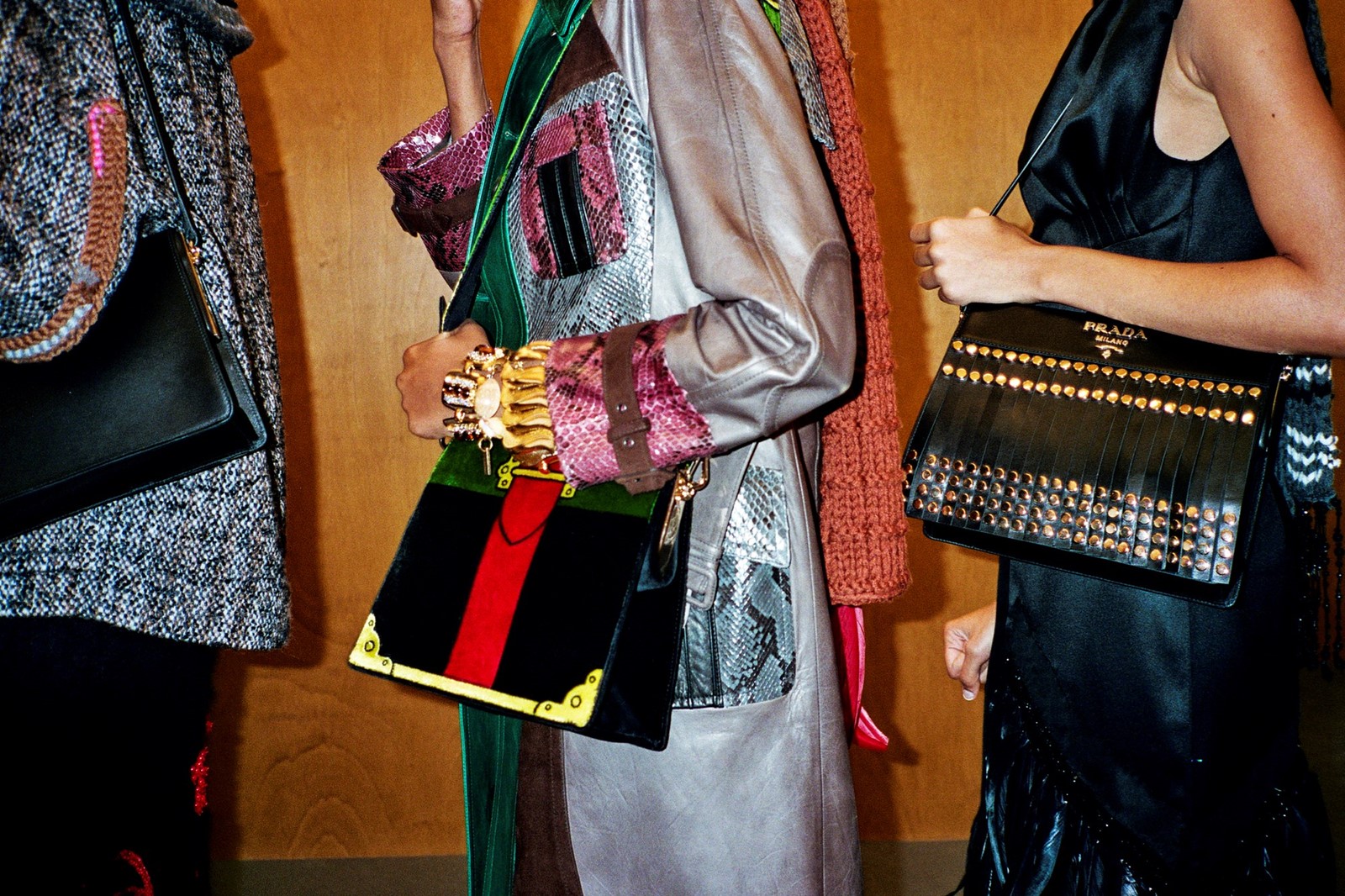
The Clothes
Of course, even on this most elevated of runways, the focus is, in the end, on fashion. Miuccia Prada always denies any overtly political intentions and, with that in mind, the clothes were entirely covetable. This season in particular the strange juxtaposition of fabrics and apparently contradictory aspects of the same sensibility – rainbow-bright marabou and homey knits, full-length silk charmeuse gowns and thigh-high hybrid biker boots in typically warped shades – sang. Underlying them, however, is a rare intelligence and exploration of femininity and the place for beauty, archetypically frivolous flourishes and seduction in a supposedly emancipated society. There is, then, a political stance, however gently it is expressed. Put their creator’s reticence to deflect that down to modesty and also to the extraordinary extremes and contrasts that lie at the heart of both her thought process and her work. Here’s what she had to say. “Seduction. How seduction is necessary. Do we really still use the same instruments of seduction as we used 50 years ago? So the problem of women, wanting to appeal, wanting to be beautiful, but how, if you are intelligent, do you do that? It’s the usual argument but an argument that was never really properly discussed and which we probably should discuss again. So it was more about the instrument of seduction, if it’s interesting, if it’s important… The answer is maybe yes, why not? I don’t know the answer but I’m thinking there must be something that makes sense.” And from bra tops to feathered hems and necklines, that it did: perfectly.
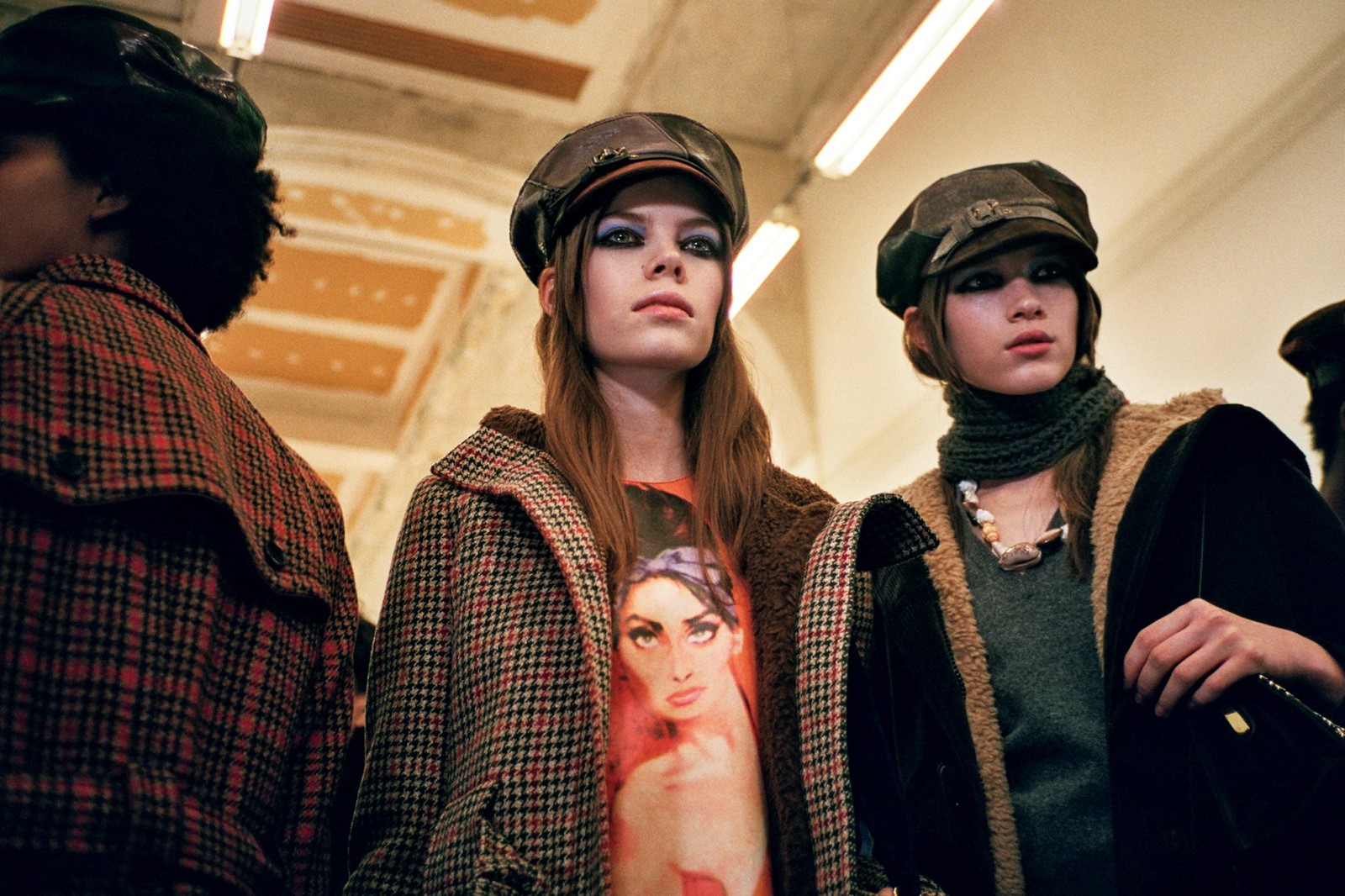
The 70s
Given that Miuccia Prada came of age in this decade, wearing, fashion folklore has it, Yves Saint Laurent couture to rallies as a fully signed-up member of the Communist Party, it’s small wonder that it is the period she returns to again and again. On this occasion, she herself was wearing a chocolate brown trouser suit (brown is her favourite colour) and mannish brogues looking at once relaxed, empowered and also lovely. To say she wears her own clothes well would be an understatement. That very same look appeared in the show, as did more characteristically 70s shades – turquoise blue, mustard yellow, plum. It’s no coincidence, either, that this was the era of the first wave of feminism and that Prada, now as then, is preoccupied with that. Crochet-knit, piece- and patch-working, marabou and more are all part of her vocabulary, now as always.
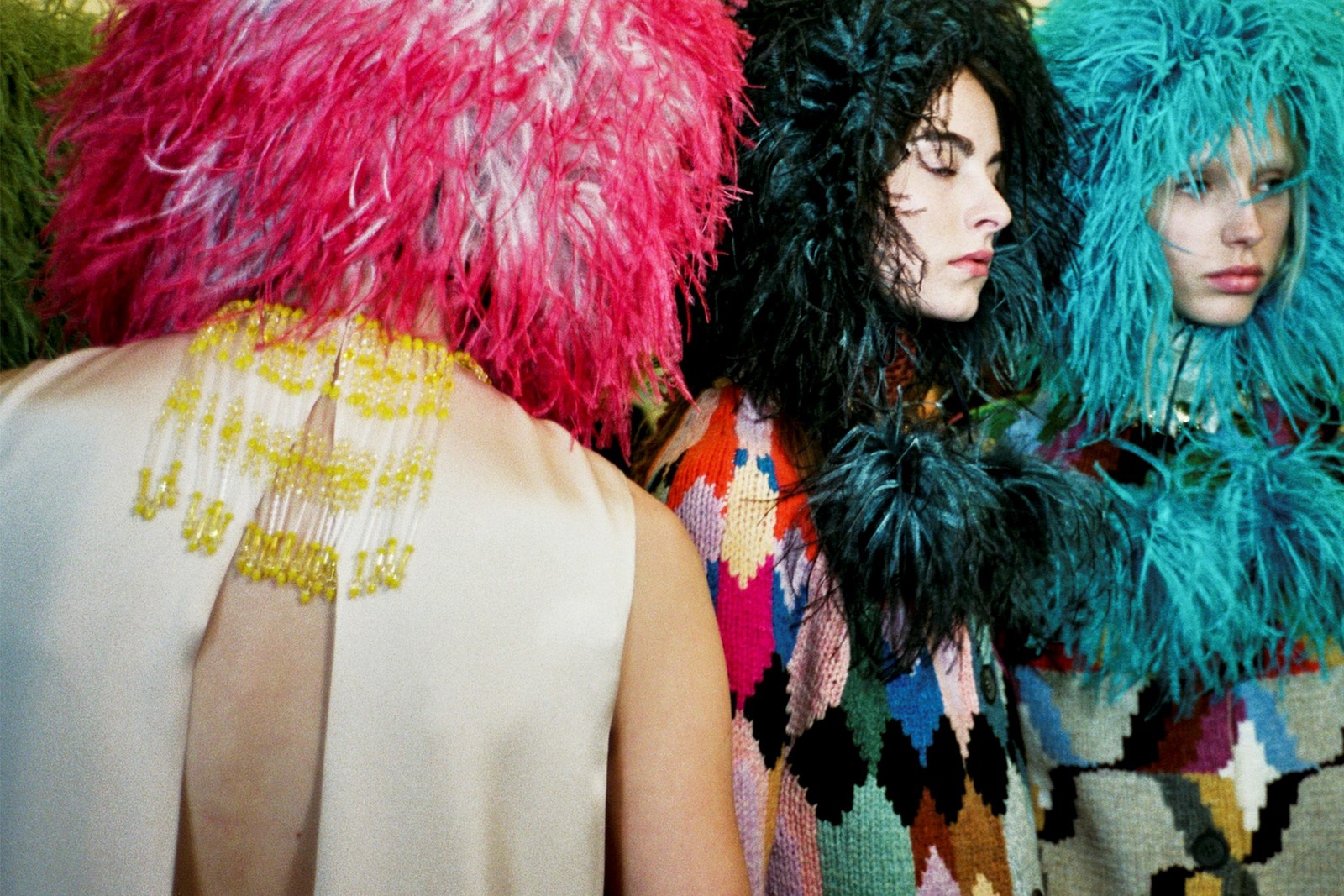
Beyond Flattering
Miuccia Prada once told me that she enjoys clothes that are “fattening”. Not for this fashion deity a sleek pair of black trousers and a white shirt, or indeed any of the other obvious staples that women turn to for both ease and to ensure they appear at their most slender. Instead: “There was a lot of hairy in this collection, like probably sauvage, or primitive, and I was fixated with any hairy material and with the knits, a symbol of women at home but of feminism also. Knit and hairy was my obsession.” It did seem that way. The sight of beautiful blonde Lindsey Wixson in a cherry red strapless dress with a kick at the hem – the type of gown that every woman might love to wear to a cocktail only in what appeared to be alpaca – was nothing short of glorious. Elsewhere, the chunky knits which did appear homespun, and panels on dresses and coats that might be more readily associated with teddy bears than clothing went to prove that one can actually be too thin and that there’s more to dressing to impress than that.
For our A/W17 fashion week coverage, anothermag.com is collaborating with Gasoline, a photography collective working with visual artists around the world. Here, Bex Day presents a look at Prada A/W17.
